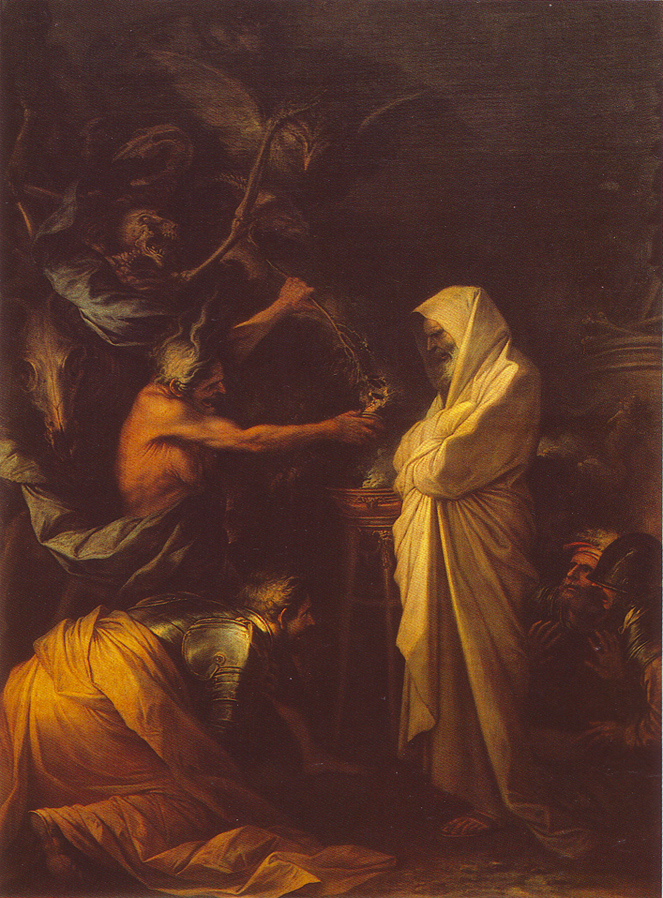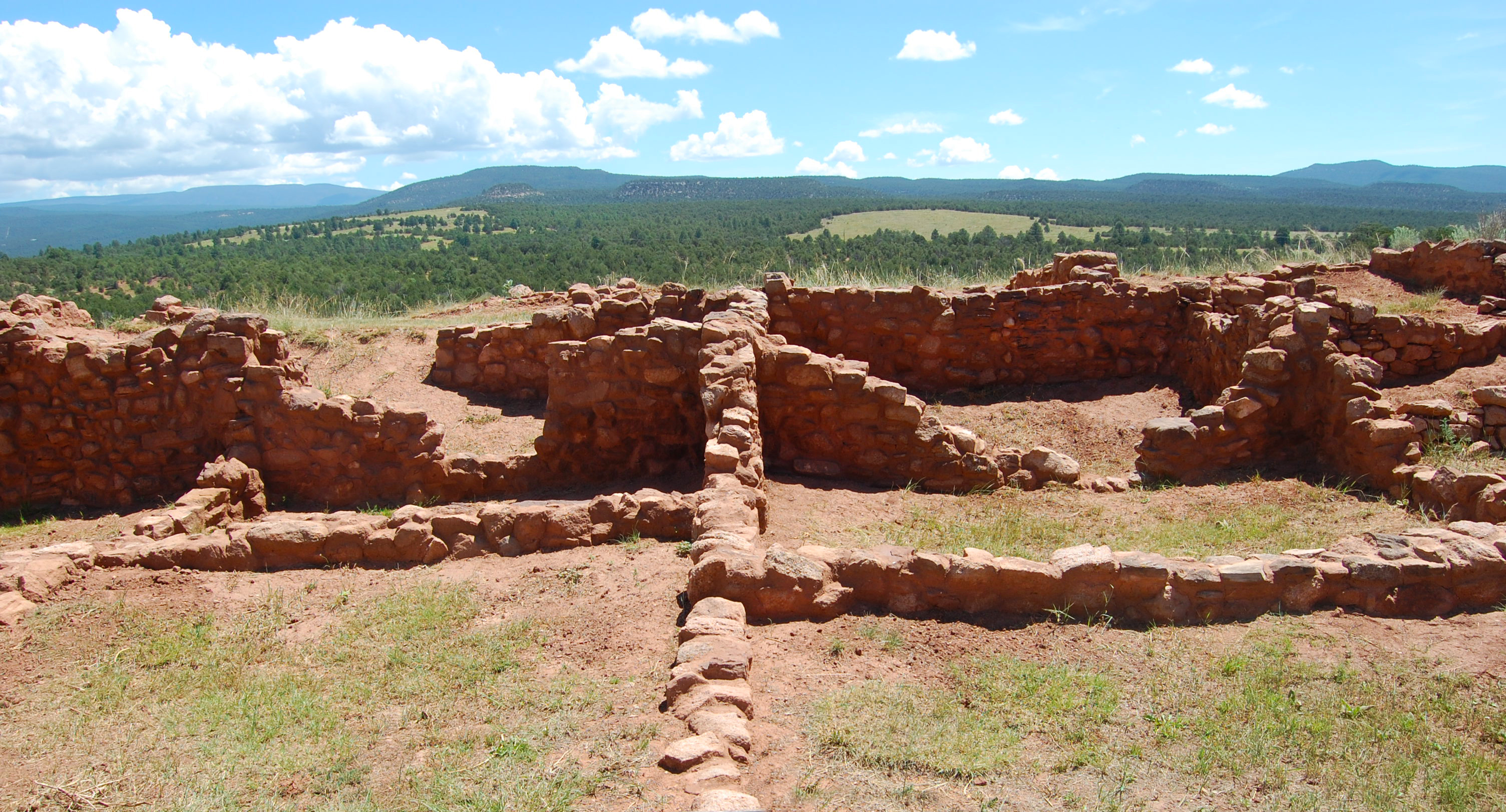|
A.V. Kidder
Alfred Vincent Kidder (October 29, 1885 – June 11, 1963) was an American archaeologist considered the foremost of the southwestern United States and Mesoamerica during the first half of the 20th century. He saw a disciplined system of archaeological techniques as a means to extend the principles of anthropology into the prehistoric past and so was the originator of the first comprehensive, systematic approach to North American archaeology. Early life Born in Marquette, Michigan, Kidder was the son of a mining engineer. He entered Harvard College with the intention of qualifying for medical school, but found himself uninspired by premedical courses. He applied for a summer job in archaeology with the University of Utah in 1907. Kidder spent two successive summers in the mesa and canyon country of southwestern Colorado, southeastern Utah and areas of New Mexico. Kidder and Jesse L. Nusbaum (later Superintendent of Mesa Verde National Park), came to the Mesa Verde area with ethnol ... [...More Info...] [...Related Items...] OR: [Wikipedia] [Google] [Baidu] |
Marquette, Michigan
Marquette ( ) is the county seat of Marquette County, Michigan, Marquette County and the largest city in the Upper Peninsula of Michigan, United States. Located on the shores of Lake Superior, Marquette is a major port known primarily for shipping iron ore from the Marquette Iron Range. The city is partially surrounded by Marquette Township, Marquette County, Michigan, Marquette Township, but the two are administered autonomously. Marquette is named after Jacques Marquette, a French Jesuit missionary who had explored the Great Lakes region. Marquette had a population of 20,629 at the 2020 United States census, 2020 census, making it the largest city in Michigan north of the Tri-Cities (Michigan), Tri-Cities. Marquette is also the third-largest American city on Lake Superior, behind Duluth, Minnesota and Superior, Wisconsin. Marquette's urban area extends south toward the community of Harvey, Michigan, Harvey and west toward Negaunee, Michigan, Negaunee and Ishpeming, Michigan, Ish ... [...More Info...] [...Related Items...] OR: [Wikipedia] [Google] [Baidu] |
Peabody Museum Of Archaeology And Ethnology
The Peabody Museum of Archaeology and Ethnology is a museum affiliated with Harvard University in Cambridge, Massachusetts, United States. Founded in 1866, the Peabody Museum is one of the oldest and largest museums focusing on anthropological material, with particular focus on the ethnography and archaeology of the Americas. The museum is caretaker to over 1.2 million objects, some of documents, 2,000 maps and site plans, and about 500,000 photographs. The museum is located at Divinity Avenue on the Harvard University campus. The museum is one of the four Harvard Museums of Science and Culture open to the public. History The museum was established through an October 8, 1866, gift from wealthy American financier and philanthropist George Peabody, a native of South Danvers (now eponymously named Peabody, Massachusetts). Peabody committed $150,000 to be used, according to the terms of the trust, to establish the position of Peabody Professor-Curator, to purchase artifacts, and ... [...More Info...] [...Related Items...] OR: [Wikipedia] [Google] [Baidu] |
National Academy Of Sciences
The National Academy of Sciences (NAS) is a United States nonprofit, NGO, non-governmental organization. NAS is part of the National Academies of Sciences, Engineering, and Medicine, along with the National Academy of Engineering (NAE) and the National Academy of Medicine (NAM). As a national academy, new members of the organization are elected annually by current members, based on their distinguished and continuing achievements in original research. Election to the National Academy is one of the highest honors in the scientific field in the United States. Member of the National Academy of Sciences, Members of the National Academy of Sciences serve ''pro bono'' as "advisers to the nation" on science, engineering, and medicine. The group holds a congressional charter under Title 36 of the United States Code. Congress legislated and President Abraham Lincoln signed an Act of Congress (1863) establishing the National Academy of Sciences as an independent, trusted nongovernmen ... [...More Info...] [...Related Items...] OR: [Wikipedia] [Google] [Baidu] |
American Philosophical Society
The American Philosophical Society (APS) is an American scholarly organization and learned society founded in 1743 in Philadelphia that promotes knowledge in the humanities and natural sciences through research, professional meetings, publications, source text, library resources, and community outreach. It was founded by the polymath Benjamin Franklin and is considered the first learned society founded in what became the United States.Philosophical Hall, the society's headquarters and a museum, is located just east of Independence Hall in Independence National Historical Park. In 1965, in recognition of the building's history, it was designated a National Historic Landmark. The society has about 1,000 elected members. As of April 2020, 5,710 members had been inducted since its creation. Through research grants, published journals, the American Philosophical Society Museum, an extensive library, and regular meetings, the society supports a variety of disciplines in the humanitie ... [...More Info...] [...Related Items...] OR: [Wikipedia] [Google] [Baidu] |
American Academy Of Arts And Sciences
The American Academy of Arts and Sciences (The Academy) is one of the oldest learned societies in the United States. It was founded in 1780 during the American Revolution by John Adams, John Hancock, James Bowdoin, Andrew Oliver, and other Founding Fathers of the United States. It is headquartered in Cambridge, Massachusetts. Membership in the academy is achieved through a nominating petition, review, and election process. The academy's quarterly journal, '' Dædalus'', is published by the MIT Press on behalf of the academy, and has been open-access since January 2021. The academy also conducts multidisciplinary public policy research. Laurie L. Patton has served as President of the Academy since January 2025. History The Academy was established by the Massachusetts legislature on May 4, 1780, charted in order "to cultivate every art and science which may tend to advance the interest, honor, dignity, and happiness of a free, independent, and virtuous people." The sixty-tw ... [...More Info...] [...Related Items...] OR: [Wikipedia] [Google] [Baidu] |
Pecos Classification
The Pecos Classification is a chronological division of all known Ancestral Puebloans into periods based on changes in architecture, art, pottery, and cultural remains. The original classification dates back to consensus reached at a 1927 archæological conference held in Pecos, New Mexico, which was organized by the United States archaeologist Alfred V. Kidder. Original classification The original Pecos Classification contained eight stages of Southwestern prehistory, but it did not specify dates. # Basketmaker I, or Early Basketmaker II # Basketmaker II, or Late Basketmaker II # Basketmaker III, or Post-Basketmaker # Pueblo I, or Proto-Pueblo # Pueblo II # Pueblo III, or Great Pueblo # Pueblo IV, or Proto-Historic # Pueblo V, or Historic Current classification Although the original classification has been significantly debated and sometimes modified over the years, the split into Basketmaker and Pueblo periods still serves as a basis for discussing the culture of th ... [...More Info...] [...Related Items...] OR: [Wikipedia] [Google] [Baidu] |
Scientific Classification
image:Hierarchical clustering diagram.png, 280px, Generalized scheme of taxonomy Taxonomy is a practice and science concerned with classification or categorization. Typically, there are two parts to it: the development of an underlying scheme of classes (a taxonomy) and the allocation of things to the classes (classification). Originally, taxonomy referred only to the Taxonomy (biology), classification of organisms on the basis of shared characteristics. Today it also has a more general sense. It may refer to the classification of things or concepts, as well as to the principles underlying such work. Thus a taxonomy can be used to organize species, documents, videos or anything else. A taxonomy organizes taxonomic units known as "taxa" (singular "taxon"). Many are hierarchy, hierarchies. One function of a taxonomy is to help users more easily find what they are searching for. This may be effected in ways that include a library classification system and a Taxonomy for search e ... [...More Info...] [...Related Items...] OR: [Wikipedia] [Google] [Baidu] |
Samuel J
Samuel is a figure who, in the narratives of the Hebrew Bible, plays a key role in the transition from the biblical judges to the United Kingdom of Israel under Saul, and again in the monarchy's transition from Saul to David. He is venerated as a prophet in Judaism, Christianity, and Islam. In addition to his role in the Bible, Samuel is mentioned in Jewish rabbinical literature, in the Christian New Testament, and in the second chapter of the Quran (although the text does not mention him by name). He is also treated in the fifth through seventh books of '' Antiquities of the Jews'', written by the Jewish scholar Josephus in the first century. He is first called "the Seer" in 1 Samuel 9:9. Biblical account Family Samuel's mother was Hannah and his father was Elkanah. Elkanah lived at Ramathaim in the district of Zuph. His genealogy is also found in a pedigree of the Kohathites (1 Chronicles 6:3–15) and in that of Heman the Ezrahite, apparently his grandson (1 Chro ... [...More Info...] [...Related Items...] OR: [Wikipedia] [Google] [Baidu] |
Pottery
Pottery is the process and the products of forming vessels and other objects with clay and other raw materials, which are fired at high temperatures to give them a hard and durable form. The place where such wares are made by a ''potter'' is also called a ''pottery'' (plural ''potteries''). The definition of ''pottery'', used by the ASTM International, is "all fired ceramic wares that contain clay when formed, except technical, structural, and refractory products". End applications include tableware, ceramic art, decorative ware, toilet, sanitary ware, and in technology and industry such as Insulator (electricity), electrical insulators and laboratory ware. In art history and archaeology, especially of ancient and prehistoric periods, pottery often means only vessels, and sculpture, sculpted figurines of the same material are called terracottas. Pottery is one of the Timeline of historic inventions, oldest human inventions, originating before the Neolithic, Neolithic period, w ... [...More Info...] [...Related Items...] OR: [Wikipedia] [Google] [Baidu] |
Pecos National Historical Park
Pecos National Historical Park is a United States National Historical Park in San Miguel County, New Mexico. The park, operated by the National Park Service, encompasses thousands of acres of landscape infused with historical elements from prehistoric archaeological ruins to 19th-century ranches, to a battlefield of the American Civil War. Its largest single feature is Pecos Pueblo also known as Cicuye Pueblo, a Native American community abandoned in historic times. First a state monument in 1935, it was made Pecos National Monument in 1965, and greatly enlarged and renamed in 1990. Two sites within the park, the pueblo and the Glorieta Pass Battlefield, are National Historic Landmarks. Features Pecos National Historical Park's main unit is located in western San Miguel County, about east of Santa Fe and just south of Pecos. Pecos Pueblo The main unit of the park preserves the ruins of Pecos Pueblo, known historically as Cicuye (sometimes spelled Ciquique), the "vill ... [...More Info...] [...Related Items...] OR: [Wikipedia] [Google] [Baidu] |
Pecos, New Mexico
Pecos is a village in San Miguel County, New Mexico, San Miguel County, New Mexico, United States. The population was 1,392 at the 2010 United States Census, 2010 census, shrinking slower than other parts of San Miguel County, partly because Pecos is within commuting distance of Santa Fe, New Mexico, Santa Fe. The village is built along the Pecos River, which flows from the north out of the Santa Fe National Forest. Notable locations nearby include Pecos National Historical Park, Glorieta Pass, and Pecos Benedictine Monastery. It is also an entry point for hunting, fishing, hiking and camping in the Pecos Wilderness. The closest United States metropolitan area, metropolitan area is the Santa Fe metropolitan area, approximately 26 miles (42 km) to the west. Geography According to the United States Census Bureau, the village has a total area of , all land. Demographics As of the census of 2000, there were 1,441 people, 542 households, and 383 families residing in the village. ... [...More Info...] [...Related Items...] OR: [Wikipedia] [Google] [Baidu] |





